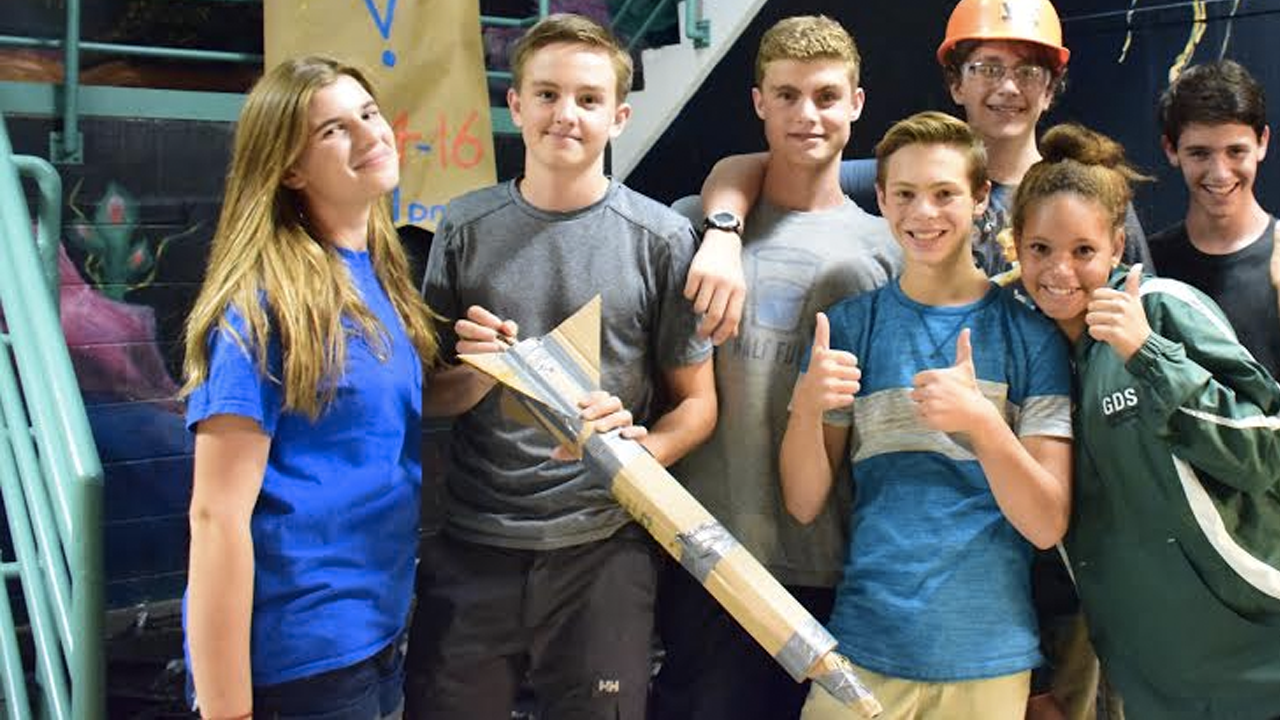On a recent Friday afternoon I was walking by the Odradek, our High School innovation lab, when a junior called out to me. “Russell, come in here,” he said. “We want to show you something.”
Three students, founding members of the High School’s “Cardboard Club,” were working together on a glider they had designed and constructed out of cardboard. The glider included metal stabilizers, a hull, wings, and ailerons crafted from cardboard, and plastic propellers that the students had designed and printed on our 3-D printer. The glider was in fact a “drone,” as the students had installed a remote control mechanism that allowed them to steer it in flight.
They explained to me that this was version four of the drone, with each version improving the plane’s lift, stability, and control. One of the students pulled out his phone and showed me a video of version three traversing our athletic field. Their goal is to perfect their design and then create an instructional video so that others can create their own low-cost drones.
This labor-intensive undertaking (eight months and counting) will not receive a grade. It will not earn the students any money. These students are grappling with engineering, physics, coding, design, collaboration, failure, and more…for fun. Given free time, during which they could choose to throw a frisbee, play video games, snapchat or sleep, they choose to do this.
A normal parental response to this scenario is, “How do I get my teenager to want to design, iterate, and pilot a drone?” And the question underneath this question is, “How do I identify my child’s passion?” The answer is, of course, you can’t. Your child needs to identify her passion herself.
GDS students are privileged to be proximate to a seemingly endless array of opportunities for engagement. From athletics to the arts, from literature to mathematics, from clubs to social activism, there’s no lack of possibility for students to follow their curiosity, to explore new areas of interest, and to deepen those areas that are already appealing. And yet mere proximity doesn’t guarantee engagement.
Adults need to remember that young people develop at different rates. There is no switch to flip or button to press that will result in a child’s passionate engagement, no matter how hard we search for it. That said, the following suggestions may prove helpful:
- Follow their lead. Psychologist Angela Duckworth encourages young people to “move toward what interests” them. For parents, this means applying a light touch and expressing curiosity about what our kids love–be that Minecraft or anime or Beyoncé. If we try to direct children toward what we think should interest them, they will often dig in their heels and head in the opposite direction.
- Don’t compare. Adolescents are constantly comparing themselves to their peers–they don’t need our help to do this. While it’s fine to be impressed by their friend who plays in a string quartet or wins the science fair, few things are more alienating to children than being compared unfavorably to their peers.
- Engage in reflective listening. Sometimes our children struggle to identify their interests, even when they have them. By noticing and asking questions, we can help our kids connect more deeply to what they love: “You seem to love watching science videos on Youtube. What do you enjoy about them?”
- Be patient. When our children were little, we knew that some would learn to walk at nine months and others at 15 months. Parental worry on this topic doesn’t help children to walk any earlier. If we are anxious that our child has not yet found his passion, he may sense this anxiety and begin to self-identify as someone with a problem. Conversely, if we affirm our child’s intrinsic value, they will be much better positioned to connect to interests when the time is right.
- Remember your child should have fun. When we are doing something that challenges us and that we love, we sometimes achieve a state of “flow”, a state of effortless concentration in which we so embrace an activity that we lose track of time. Finding a passion does not have to involve suffering. By noticing those activities in which our children “lose themselves,” we can help them identify areas of passion.
- Be a model. As adults, do we make time for our own passions? Do we love what we do? Our children are far more likely to follow our example than they are to listen to our words. If our children see us making time for reading books that we love or pursuing hobbies, they’re far more likely to cultivate their own unique interests.
At GDS, students are blessed to be surrounded by talented peers and adults and proximate to a range of rich activity. It is an ecosystem in which passions emerge, so long as we give them time, oxygen, and care.


